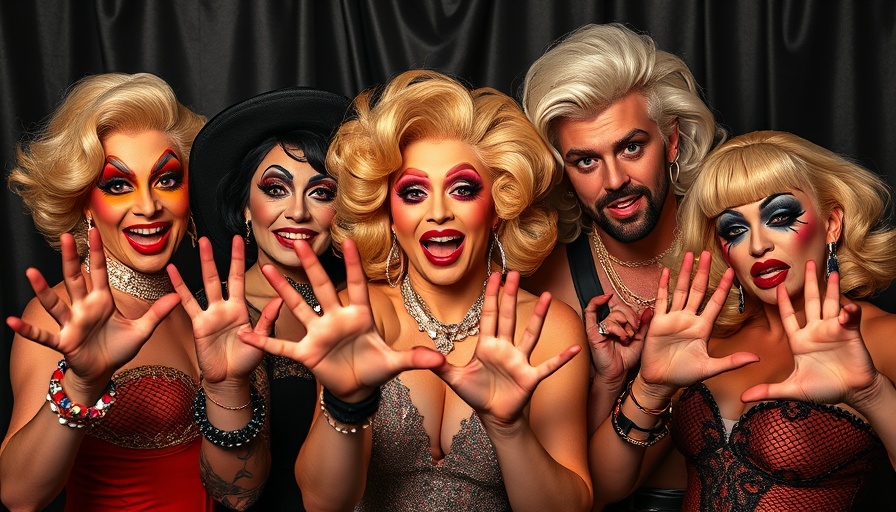
Revisiting a Cultural Milestone: *Paris is Burning*
The iconic documentary *Paris is Burning*, released in 1991, holds a vital place in the history of queer cinema, capturing the vibrant and tumultuous ballroom scene of 1980s New York City. It explores the lives of Black and Latinx queer individuals navigating a world marred by systemic racism and socio-economic struggles. In doing so, it lays bare the intersectionality of race, gender, and class, a topic as crucial today as it was during the film's debut.
The Evolution of Queer Culture Through Community
As the film illustrates, the ballroom culture emerged as a refuge for those marginalized by society. The support of “houses,” led by strong matriarchal figures, created an environment where young performers could express themselves authentically, while competing for trophies and glory. This sense of community and shared struggle is reflected not only in the lives of the participants but also in how the art form has evolved, now seen in mainstream media through shows like *Pose* and *RuPaul’s Drag Race*. These platforms have not only celebrated voguing but have also raised awareness of the unique challenges still faced by queer individuals, especially amidst a rise in right-wing populism and systemic oppression.
Preserving Memory Through Artistic Expression
One of the powerful aspects of *Paris is Burning* is its ability to confront the impact of the AIDS crisis on the LGBTQ+ community. Interviews with performers such as Venus Xtravaganza provide a haunting insight into how this epidemic reshaped lives and community dynamics. The film serves as both a celebration of life and a memorial for those lost, marking a poignant juxtaposition where joy and tragedy coexist. Observing this resilience in the face of adversity inspires us to reflect on the importance of community, not just as a support system but as a crucial component in cultural preservation.
Claims of Cultural Appropriation: Navigating Critical Perspectives
The film has faced scrutiny over accusations of cultural appropriation, particularly regarding the privilege of its creator, Jennie Livingston, who is critiqued for her outsider perspective. This tension raises vital questions about representation and voice within documentary filmmaking. As we continue to engage with these narratives, acknowledging the complexities surrounding authorship and cultural representation helps deepen our understanding of both historical contexts and current dynamics in queer culture.
Beyond Nostalgia: What *Paris is Burning* Teaches Us Today
Decades after its release, *Paris is Burning* remains a crucial text for understanding the ongoing struggle of queer communities. Its exploration of identity, community, and the persistent shadows of violence and discrimination resonates with contemporary audiences navigating similar terrains. The film invites viewers—whether they are part of the LGBTQ+ community or allies—to engage with its lessons about resilience, creativity, and the importance of advocating for marginalized voices.
As we reflect on these narratives, let us commit to acknowledging the stories that shape our understanding of cultural and historical contexts—#BlackLivesMatter, #QueerHistory, and #LGBTQ+ rights are ever relevant. For those invested in legal, social, and economic structures, recognizing the contributions of our diverse communities can guide us in creating a more equitable future.
 Add Row
Add Row  Add
Add 




Write A Comment